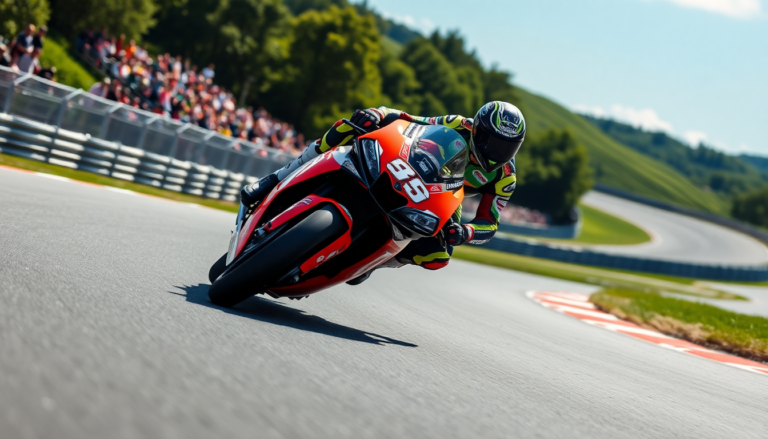Argomenti trattati
When it comes to the high-octane world of MotoGP™, fans often find themselves wondering about the unique techniques employed by the riders. One such intriguing practice is the act of dangling a leg while navigating turns. This seemingly simple gesture is rich with purpose and strategy, enhancing not just performance but also rider safety and control. Let’s delve into the fascinating reasons behind this phenomenon and how it plays a crucial role in the thrilling spectacle of motorcycle racing.
What is leg dangling in MotoGP™?
Leg dangling refers to the technique where riders extend one leg outwards while leaning into a turn. This maneuver is not merely a flamboyant display; it serves multiple practical purposes. By extending their leg, riders can shift their body weight, which is essential for maintaining balance and achieving optimal cornering speeds. This action helps in fine-tuning the bike’s dynamics, allowing for greater grip and stability on the track.
Moreover, the leg acts as an additional stabilizing force. It creates a counterbalance to the weight of the motorcycle, especially during high-speed turns. This technique is particularly beneficial in tight corners where precision is key. Riders often practice this maneuver extensively, incorporating it seamlessly into their overall racing strategy.
The physics behind leg dangling
Understanding the physics involved in leg dangling reveals why it’s a staple among MotoGP™ riders. As a motorcycle leans into a turn, the center of gravity shifts. By dangling a leg, the rider can lower the center of gravity further, enhancing stability. This shift helps in maintaining traction, especially on slick surfaces where grip is compromised.
Additionally, the leg can act like a rudder. By adjusting the angle of the leg, riders can influence the bike’s trajectory, making minute adjustments that can be the difference between a successful turn and a crash. This technique involves an intricate understanding of balance and control, showcasing the riders’ extraordinary skills and instincts.
Enhancing rider safety
Leg dangling also has safety implications. In the event of an unexpected loss of traction, extending a leg can provide an additional point of contact with the ground. This can help the rider regain balance and avoid a fall. It’s a split-second decision that can mean the difference between staying upright and crashing out of the race.
Furthermore, this technique allows riders to communicate with their teams and fellow competitors. An extended leg can signal to other riders about the rider’s intentions in a crowded field, promoting awareness and reducing the risk of collisions.
Comparing leg dangling with other techniques
Leg dangling isn’t the only technique that MotoGP™ riders use. Many also employ body positioning strategies, including hanging off the bike or shifting their weight forward or backward. However, leg dangling is unique in its ability to combine multiple benefits into a single action. It enhances both performance and safety simultaneously, making it an essential part of a rider’s toolkit.
In contrast, techniques like body positioning may require more deliberate shifts in posture, which can be less intuitive under race conditions. This is why leg dangling remains a favorite among many riders, as it feels more natural and instinctive during high-speed maneuvers.
Leg dangling in practice
During a race, the execution of leg dangling can vary from rider to rider. Some may use it consistently, while others might reserve it for specific turns or conditions. This variability adds an element of strategy to races, as riders must decide when to employ this technique based on their comfort level, track conditions, and competitive dynamics.
For spectators, leg dangling is often a thrilling sight, accentuating the drama of MotoGP™ racing. It’s a testament to the skill, precision, and bravery of the riders who navigate these high-speed challenges with finesse. Understanding the purpose behind this technique deepens the appreciation for the sport and the athletes who compete at its highest levels.
The future of MotoGP™ techniques
As technology continues to evolve, so too will the techniques used by MotoGP™ riders. Innovations in bike design and safety gear may influence how riders approach cornering and weight distribution. However, the fundamental principles behind leg dangling are likely to remain relevant, given its proven effectiveness in enhancing performance and safety on the track.
In conclusion, leg dangling is much more than a quirky habit; it’s a critical technique that embodies the artistry and science of MotoGP™ racing. As fans, understanding this maneuver allows us to appreciate the complexities of the sport and the incredible skill required to master it.

